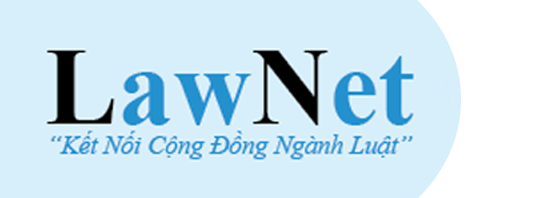Regulations on investigation and survey serving the compilation of the List of water sources requiring protection corridor in Vietnam from January 10, 2025
Below are the regulations on investigation and survey to serve the establishment of the List of water sources requiring the establishment of a protection corridor in Vietnam from January 10, 2025.

Regulations on investigation and survey serving the compilation of the List of water sources requiring protection corridor in Vietnam from January 10, 2025 (Image from internet)
On November 26, 2024, the Minister of Natural Resources and Environment of VIetnam issued Circular 23/2024/TT-BTNMT stipulating technical guidelines for establishing water source protection corridors.
Regulations on investigation and survey serving the compilation of the List of water sources requiring protection corridor in Vietnam from January 10, 2025
According to Article 5 of Circular 23/2024/TT-BTNMT on investigation and survey for establishing the List of water sources requiring protection corridors in Vietnam:
(1) Preparation:
- Receive the field investigation assignment;
- Determine the content, object, and scope of the field investigation (research the field investigation task and related documents; study various maps, consider the distribution of residential areas, identify the objects to be focused on in the investigation, and initially delineate the focus area on the map);
- Develop a plan, method, and schedule for field investigation: draft a detailed plan for implementing the investigation schedule; chart the investigation route and illustrate it on the land use status map or cadastral map (in areas where a cadastral map is available); set up a plan for arranging personnel and equipment transport during the field investigation;
- Prepare labor, materials, tools, equipment, and investigative documents: equip tools needed for the investigation; install, check, calibrate, verify, and test machinery before field investigation; prepare necessary documents and investigation forms; pack equipment, documents, tools, and materials for transport to the field gathering location;
- Contact local authorities and make other preparatory arrangements.
(2) Conduct field investigation:
- Investigate, collect, and update data from relevant local agencies: characteristics of surface water sources, the current status of surface water exploitation and wastewater discharge, water drainage status; current water quality and the pollution, degradation, and depletion situation; a list of non-fillable lakes, ponds, marshes; dams, hydropower, irrigation reservoirs, and other water reservoirs on rivers and streams; the socio-economic development situation; programs, plans, economic sector development strategies affecting water resources; land use status, economic, cultural, and social activities in areas adjacent to water sources; management of water resources, prominent issues related to the exploitation and use of surface water and wastewater discharge; constructions (including above-ground, underground, and technical infrastructure works) in areas adjacent to water sources; maps of current land use and cadastral maps;
- Follow the comprehensive investigation schedule along defined routes on both sides and perpendicular to rivers, streams, canals, and ditches; survey around dams, hydropower, and irrigation reservoirs, non-fillable lakes to observe, describe, take sketches, and collect information on the characteristics and morphology of rivers, streams, canals, ditches;
Conduct surveys, measure, and map out locations to determine the bank line: identify the status, location of the water edge, and the area's topography for river, stream, canal, ditch sections without dykes; dyke crest for river, stream, canal, ditch sections with dykes; the highest water level for lagoons, ponds, natural and artificial lakes (not hydropower or irrigation reservoirs) and the multi-year average high tide level for coastal lagoons.
- Conduct detailed investigation for river, stream, canal, ditch sections: determine the name of the water source, administrative location, coordinates of starting and ending points; length of river, stream, canal, ditch sections; flow direction; water source function; observe, describe, photograph, sketch, collect information on topography, geology, hydrology, environment, ecology; the situation of riverbed, riverbank developments; exploitation, use, and wastewater discharge activities; the residential situation along water sources; infrastructure facilities near water sources, other related information, and some cases require additional information as follows:
For eroded or erosion-prone river, stream sections: administrative location, coordinates of starting and ending points of erosion sections; erosion scale (length, width); observe, describe, photograph, sketch, collect information on: erosion causes; topography, geology, vegetation cover characteristics.
For degraded, polluted, depleted, and water source rehabilitation-needed river, stream, canal, ditch sections: water quality sensation (color, smell); environmental pollution-related phenomena (fish jumping, algal blooms, and other related phenomena), collect data on wastewater discharge structures, information on water levels, river flows; major pollution, degradation, depletion causes, and other related information.
For river, stream, canal, ditch sections being main drainage axes for urban areas, residential areas, industrial parks, clusters: observe, describe, photograph, sketch, collect information on residential areas, urban areas, industrial parks, clusters; wastewater discharge activities, discharge types, current water quality status, and other related information.
For river, stream, canal, ditch sections linked with the livelihoods of riverside communities: activities connected to the livelihoods of riverside residents (aquaculture, waterway transport, vegetable cultivation), observe, describe, photograph, sketch, collect information on riverside population; infrastructure facilities near water sources, and other related information.
- Conduct detailed investigation for water sources with protective, religious, cultural, biodiversity conservation functions and tourism development: determine the name of water sources, administrative location, coordinates of starting and ending points; water source function, religious activities, cultural values, biodiversity, tourism development and other related information;
- Conduct investigation, collect detailed information for non-fillable lakes, ponds, marshes: name, administrative location, coordinates, water surface area of lakes, ponds, marshes; management unit; functions of lakes, ponds, marshes; observe, photograph, sketch, describe lake, pond characteristics and embankment situation, erosion status around banks, religious activities, high biodiversity value, cultural conservation and protection, natural ecosystem development.
For ponds, lakes serving as domestic water sources, gather additional information on exploitation flows, exploitation units, licensing status and other related information.
- Conduct detailed investigation for dams, hydropower, irrigation reservoirs, and other water exploitation projects on rivers, streams: determine the name, type of project, administrative location, coordinates of main project items, name of tapped water source; main parameters of the project regarding water use purpose, capacity, irrigation area, installed capacity, exploitation flow, management unit, exploitation license information and other related information; observe, photograph, sketch, describe the residential situation near the project;
- Investigated information is recorded in investigation forms, field investigation logs;
Sample field investigation forms are detailed in Sample No. 01 Appendix 02 issued with Circular 23/2024/TT-BTNMT.
- Adjust field investigation data, daily maintain equipment: check, adjust field investigation documents, data for the day (field investigation forms, investigation logs, and related documents); review, check the content, volume of completed field tasks; adjust investigation plan and schedule; adjust, supplement field investigation work volume, content (if necessary); check, adjust equipment used for investigation after each working day.
(3) Synthesize, adjust, complete field investigation results and submit products:
- Adjust, complete gathered data, information, and field investigation results;
- Enter investigation results into the computer;
- Process, aggregate, adjust data, information, investigation results;
- Prepare investigation result report, maps of routes, and investigation point locations on the land use status map or cadastral map; tables, statistical sheets summarizing the investigation, survey results and suggest provisional marker locations;
- Complete the dossier, investigative documents and hand over products.
- Key word:
- water source
- protection corridor
- Vietnam
- Number of deputy directors of departments in Vietnam in accordance with Decree 45/2025/ND-CP
- Cases ineligible for pardon in Vietnam in 2025
- Decree 50/2025 amending Decree 151/2017 on the management of public assets in Vietnam
- Circular 07/2025 amending Circular 02/2022 on the Law on Environmental Protection in Vietnam
- Adjustment to the organizational structure of the Ministry of Health of Vietnam: Certain agencies are no longer listed in the organizational structure
- Vietnam aims to welcome 22-23 million international tourists in Vietnam in 2025
-

- Number of deputy directors of departments in Vietnam ...
- 15:04, 05/03/2025
-

- Cases ineligible for pardon in Vietnam in 2025
- 14:43, 05/03/2025
-

- Decree 50/2025 amending Decree 151/2017 on the ...
- 12:00, 05/03/2025
-

- Circular 07/2025 amending Circular 02/2022 on ...
- 11:30, 05/03/2025
-

- Adjustment to the organizational structure of ...
- 10:34, 05/03/2025
-

- Notable new policies of Vietnam effective as of ...
- 16:26, 11/04/2025
-
.Medium.png)
- Notable documents of Vietnam in the previous week ...
- 16:21, 11/04/2025
-
.Medium.png)
- Notable documents of Vietnam in the previous week ...
- 16:11, 02/04/2025
-
.Medium.png)
- Notable new policies of Vietnam to be effective ...
- 16:04, 02/04/2025
-
.Medium.png)
- Notable new policies of Vietnam effective from ...
- 14:51, 21/03/2025

 Article table of contents
Article table of contents
